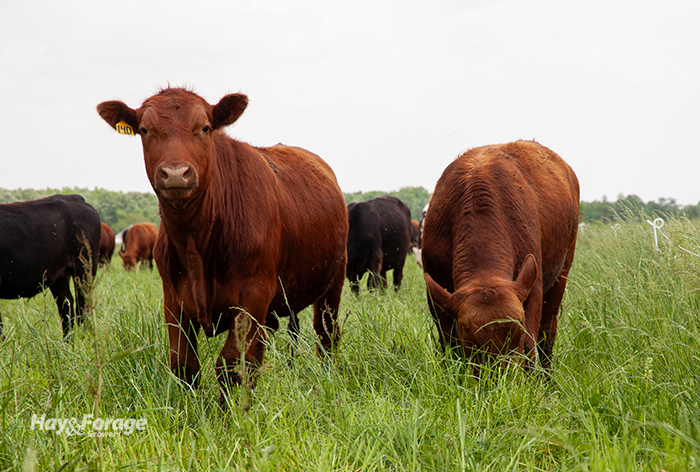
Custom grazing can diversify a forage system and improve cash flow for farmers and landowners. Bringing outside cattle into a system at specific times of the year can also benefit forage utilization and boost animal performance. With that said, custom grazing comes with a unique set of challenges among livestock and their owners.
Jason Salchow discussed the opportunities and responsibilities associated with custom grazing at last month’s Heart of America Grazing Conference in Cincinnati, Ohio. The veterinarian and instructor at Missouri State University custom grazes several cattle herds on roughly 800 owned and rented acres near Springfield, Mo.
Salchow raises different types of cattle on his tall fescue- and legume-based pastures, from Holstein steers to high-value seedstock bulls. This variation requires him to be flexible so that his system not only meets every animal’s needs, but also complies with each herd owner’s expectations.
“Things can get complex because we want to be so flexible,” Salchow asserted. For example, he feeds cattle mineral provided by their owners according to individual supplementation regimens. Moreover, his grazing plans can change on a dime if owners decide to sell their cattle early. Salchow also manages different pricing schemes for different classes of livestock, charging per pound of gain for stocker cattle and steers while charging per day for grazing of cows and bulls.
He suggested one way to maintain such a dynamic system is to outline the terms of agreement in a written contract between each livestock owner. Then, he offered the following advice for those interested in getting started with custom grazing.
Start with stockers. Custom grazing stocker cattle during the spring flush of tall fescue can be a relatively easy and economical way to enhance a cow-calf operation. Salchow said stocker cattle can gain 150 to 200 pounds per head at the beginning of the grazing season when high-quality forage grows rapidly. The risk of fescue toxicosis is also lower at this time.
“There is an opportunity cost for feeding stocker-quality grass to cows and calves,” Salchow stated. “If you’ve already got a grazing system and you’re moving cows and calves in a rotation, it’s not hard to ramp things up by adding some stocker cattle.”
Be ready to deal with death loss. Most of the cattle that enter Salchow’s farm have been vaccinated and preconditioned, but this doesn’t eliminate the possibility of animals getting sick or dying. When this happens, he must be upfront with livestock owners and explain the situation. The same is true if cattle are injured by something in his pastures or attacked by wild animals, which have both happened before.
To build trust with new customers, Salchow used to split costs with livestock owners if death loss was greater than 2%. Now his returning clients are fully liable for the death loss of an animal but do not have to pay for the time it spent or weight it gained on his farm.
“If we had 150 pounds of gain on that animal in the end, we take that off their start weight,” Salchow explained. “That way, if (the owners) are not getting paid for the animal, we are not getting paid for the gain. It’s one of those deals that needs to be spelled out ahead of time,” he added.
Know yourself. “When you are custom grazing, you are offering a service,” Salchow asserted. “You have to know your customer, but more important than that, you have to know yourself.”
Salchow emphasized that custom graziers must be motivated to care for other people’s livestock despite issues like inclement weather or strained business relationships. He added that recordkeeping is key to custom grazing, so if farmers are not willing to do this for their own cattle, they should not commit to doing it for someone else’s.

